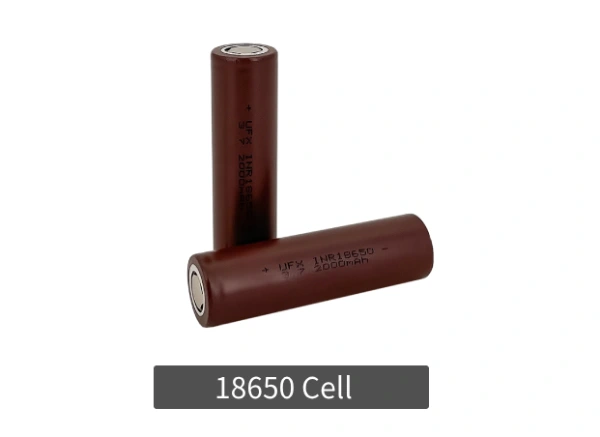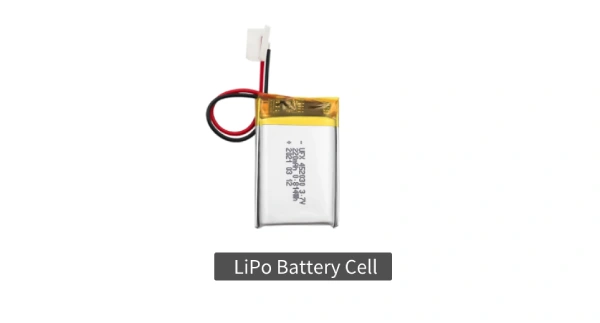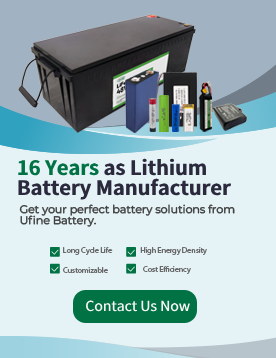
- Part 1. What is the 18650 battery cell?
- Part 2. What is a LiPo battery cell?
- Part 3. LiPo vs 18650: detailed side-by-side comparison
- Part 4. Performance comparison
- Part 5. Which battery should you choose?
- Part 6. Why do 18650 or LiPo batteries swell or explode?
- Part 7. How to use LiPo and 18650 batteries safely
- Part 8. Custom LiPo or 18650 cell & packs
- Part 9. Final conclusion
- Part 10. FAQs
Quick Summary: LiPo vs 18650 — What’s the Main Difference? 18650 cells are cylindrical lithium-ion cells known for high energy density, long cycle life, and excellent safety. LiPo cells are soft pouch cells known for light weight, flexible size, and much higher discharge rates.
If you need:
✔ Long cycle life & stable power → Choose 18650
✔ Light weight & high current output → Choose LiPo
Part 1. What is the 18650 battery cell?
An 18650 battery is a cylindrical lithium-ion cell measuring 18mm × 65mm. It is one of the most mature lithium cell formats on the market and is widely used in:
- Electric vehicles
- Power tools
- Energy storage systems
- Laptop battery packs
- Flashlights and vaping devices
Key Specifications
- Nominal voltage: 3.6V–3.7V
- Capacity: 30mAh–3500mAh
- Cycle life: 500–1000+ cycles
- Energy density: 220–260 Wh/kg (high)
Advantages of 18650 Cells
- High energy density
- Long lifespan
- Stable performance
- Excellent manufacturing consistency
- Low price and easy to source
- Safer due to metal cylindrical casing
Disadvantages
- Fixed cylindrical shape
- Larger weight
- Moderate discharge rate (not suitable for very high current bursts)
Part 2. What is a LiPo battery cell?
LiPo (Lithium Polymer) cells use a soft pouch structure with a polymer electrolyte. They can be made in various shapes, from ultra-thin packs to custom geometric designs.
LiPo batteries are widely used in:
- Drones
- RC cars / RC airplanes
- Robotics
- Wearables
- Slim electronic devices
Key Specifications
- Nominal voltage: 3.7V per cell
- Capacity: 100mAh–10000mAh+
- Discharge rate: Up to 30C–120C (very high)
- Weight: Lighter than cylindrical cells
Advantages of LiPo Cells
- Extremely high discharge rate (C-rate)
- Lightweight
- Flexible sizes and shapes
- Perfect for compact or weight-sensitive designs
Disadvantages
- Shorter cycle life than 18650
- More sensitive to puncture, swelling, overcharge
- Higher cost
- Lower consistency across manufacturers
Part 3. LiPo vs 18650: detailed side-by-side comparison
Below is a full technical comparison:
| Feature | 18650 Cell | LiPo Cell |
|---|---|---|
| Structure | Cylindrical metal shell | Soft pouch |
| Energy Density | ⭐⭐⭐⭐ High | ⭐⭐⭐ Medium |
| Weight | Heavier | Lighter |
| Discharge Rate (C-rate) | Moderate | Very high |
| Cycle Life | 500–1000+ cycles | 300–600 cycles |
| Safety | More stable, better thermal control | Sensitive to swelling & damage |
| Manufacturing Consistency | Very high | Medium |
| Price | Lower | Higher |
| Design Flexibility | Fixed shape | Custom shapes available |
| Typical Use | Power tools, EVs, storage | Drones, RC, robotics |
Part 4. Performance comparison
1 Energy Density
- 18650: 220–260 Wh/kg
- LiPo: 150–200 Wh/kg
➡ 18650 has higher energy density, meaning longer runtime for the same weight.
2 Discharge Rate
- LiPo cells support very high discharge (20C–120C).
- 18650 usually provides 2C–5C.
➡ LiPo is better for devices that require bursts of power, like drones or race RC cars.
3 Cycle Life
Typical values:
| Battery Type | Cycle Life |
|---|---|
| 18650 | 500–1000+ cycles |
| LiPo | 300–600 cycles |
➡ 18650 lasts longer.
4 Safety
18650 cells:
- Metal shell
- Built-in safety vents
- Better thermal structure
LiPo cells:
- More prone to swelling
- Sensitive to overcharge
- Higher fire risk if damaged
➡ 18650 is safer and more stable.
Part 5. Which battery should you choose?
Choose 18650 if you need:
✔ Long cycle life
✔ Stable power output
✔ Lower cost
✔ High energy density
✔ Better safety
Best for:
- Power tools
- Electric bicycles / scooters
- EV modules
- Flashlights
- Vaping devices
- Energy storage (ESS)
Choose LiPo if you need:
✔ Lightweight battery
✔ High current output
✔ Slim or custom shapes
✔ High burst power
Best for:
- Drones
- RC cars / airplanes
- Robotics
- Wearable electronics
- Compact industrial devices
Part 6. Why do 18650 or LiPo batteries swell or explode?
Both battery types can become dangerous if misused. Common causes:
1 Overcharging
Excessive voltage causes internal pressure → swelling or explosion.
2 Short Circuit
Creates rapid heating → thermal runaway.
3 Physical Damage
Especially dangerous for LiPo soft pouches.
4 Overheating
High temperatures can deform separators inside the battery.
5 Poor-quality cells
Inconsistent LiPo manufacturing increases risk.
Part 7. How to use LiPo and 18650 batteries safely
✔ Use a certified charger
Prevent overcharge and over-discharge.
✔ Store properly
Cool, dry environment.
LiPo should be stored at 3.7–3.85V.
✔ Avoid extreme temperature
Avoid charging below 0°C or using above 60°C.
✔ Avoid physical impact
Especially important for LiPo batteries.
Part 8. Custom LiPo or 18650 cell & packs
If your device requires a custom design:
- 18650 packs support BMS, series-parallel combinations, EV-grade modules
- LiPo packs support custom shapes, high-C discharge, thin packs
- Both can be built with PCM/BMS protection
Ufine Battery provides custom solutions for both types, based on your:
- Voltage
- Capacity
- Discharge rate
- Operating temperature
- Shape and dimensions
Part 9. Final conclusion
- Choose 18650 for long lifespan, high safety, and high energy density.
- Choose LiPo for lightweight, high power, and flexible size applications.
Both have their advantages, and choosing the right type depends on your power, size, weight, and budget requirements.
For custom LiPo, 18650, or LiFePO4 battery packs, Ufine Battery can design, test, and manufacture a solution tailored to your exact specifications.
Part 10. FAQs
1. Can I replace an 18650 with a LiPo battery?
Not recommended unless:
- Voltage matches
- Discharge requirements match
- Physical size fits
- BMS is compatible
2. Which lasts longer, LiPo or 18650?
18650 lasts longer (500–1000+ cycles).
3. Are LiPo batteries safer than 18650?
No.
18650 is generally safer due to metal protection and better consistency.
4. Which battery gives more power?
LiPo, because of much higher discharge rate.
5. Why does LiPo swell?
Due to gas buildup from:
- Overcharge
- Over-discharge
- High temperature
- Internal damage
Related Tags:
More Articles

Battery Load Test: A Comprehensive Guide
Step-by-step battery load test guide for car, solar & industrial use. Learn how to load test a battery, interpret voltage charts, and avoid common mistakes.
The Comprehensive Guide to Battery Balancing and Battery Balancer
Discover how battery balancers improve lithium battery performance, lifespan, and safety. Learn types, functions, and tips to choose the right balancer.
What Is the Best Voltage for a Chainsaw Battery?
Compare 12V-80V chainsaw batteries for light pruning, medium firewood, and professional cutting. See best battery chainsaw with runtime charts and safety tips.
Lithium VS. Alkaline Batteries: A Comprehensive Comparison
Lithium batteries last 3–7× longer than alkaline and perform better in cold weather. Compare lifespan, cost, safety, and best uses to choose the right battery.
Comparing Lithium-Sulfur and Lithium-Ion Batteries: Which is Right for You?
Compare lithium-sulfur (Li-S) and lithium-ion batteries on energy, lifespan, cost, safety, and applications. Best choice for drones, EVs, and electronics.





